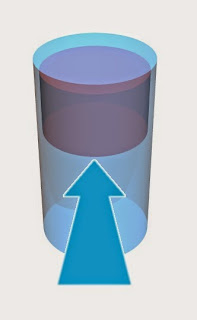Part 1 – Cylinder basics
Volume and configuration
So starting at the very beginning, which we’ll breeze through. A cylinder is as someone once stated – ‘a cylinder is a long circle’
Cylinder
arrangement
Some engine have multiple cylinders and we’ll cover why later on, but there several ‘layouts’ that have been quite popular with engineers over the years and here’s a brief description on their names and arrangements.
The single, obviously named due to a single cylinder. Commonly called a ‘thumper’ in motorcycles due to the thumping exhaust note these engine often produce. One cylinder, 1 piston.
The parallel twin, 2 cylinders orientated in parallel with the pistons running in unison. Quite an old design layout rarely seen in modern day engines.
Opposed Parallel twin which shares the same cylinder layout as the twin above but with the 2 pistons running 180 opposed to each other. This design is still used today for reasons we will cover later in the crankshaft section.
The opposing twin, this layout is heavily linked to BMW motorcycles and a 4 cylinder version which was fitted to the VW bettle and the Subaru Impreza.

The
V twin arrangement which has seen fame with Harley Davidson and Ducati. The ‘V’
angle has been changed from different models and manufacturers over the years,
ranging from 40,60 and 90deg being most common.
Opposed
piston design – this engine can have 1 or more cylinders with each cylinder
containing 2 pistons at either end, with combustion taking place in the centre.
Straight 3 cylinder – named so because –
well there’s 3 cylinders in a straight line. This is become more popular in
recent years, the reduced number of components with power levels reaching those
of 20 year old 4 cylinder engine has increased there usage. Triumph have
developed this arrangement with encouraging results in recent years.
The straight 4 – the most common engine
configuration due to balance and simplicity. Almost every road can van and tuck
on the road today is fitted with this configuration.
The
V4 – this has seen a lot of action in the motorcycle racing scene
The U engine – or also know as the square
engine. This engine has 2 crankshafts. This configuration was a 1900-10’s
design that has was revamped in the 1930’s.
Radial engine – this engine was used
primarily in aircraft pre and post WW1, the original variety functioned by
rotating the cylinders themselves. The very few engines built today have fixed
cylinders.
The straight 6 – obvious name, but this
configuration has many benefits which we’ll go over later when covering
crankshafts.
The V6 engine – very popular with Porsche and Jaguar for many years. Provides a well balanced arrangement.
The V8 – very popular with the racing
scene and hand in hand with the American Muscle Car scene
The W engine – used recently with a lot
of press coverage in the Bugatti Veyron. This design has been around for about
100 years. The graphic below isn’t a true reproduction but makes it clearer to
understand. The engine runs with a single crankshaft.
There are obiviously other engine formats like the V10 and V12 and V16 and so on but these are the major different configurations that provide different challenges and produce different performance results that we will cover over the coming blogs.
















No comments:
Post a Comment